Are you familiar with deadheading? This is the practice of cutting flowers off a plant after they finish blooming, and before they set seed.
Its main purpose is to extend the growing season by energizing plants capable of reblooming, so they will produce as many flowers as possible.
Additional benefits that apply to all flowering plants include promoting foliar and root growth, keeping plants looking their best, preventing seed production and self-sowing, and minimizing yard litter that can invite pests and pathogens.
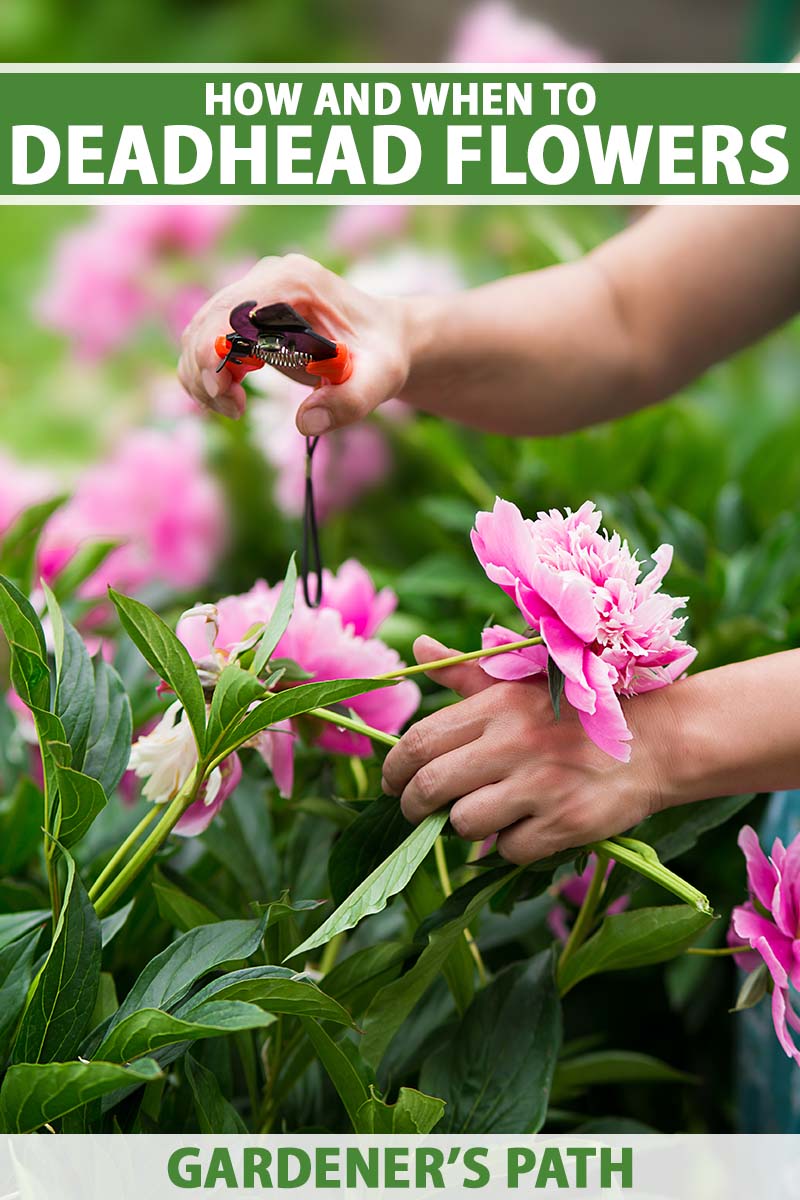
We link to vendors to help you find relevant products. If you buy from one of our links, we may earn a commission.
The term “deadheading” is sometimes extended to include the removal of seed pods, which can provide many of the noted additional benefits, but comes too late to energize further bud setting.
In this article, we present a variety of plant types, and discuss how deadheading can benefit them during the growing season.
Here’s what we’ll cover:
How to Deadhead Flowering Plants
Let’s get started!
Why Deadhead?
As the growing season begins, we envision the garden alive with lush foliage and budding flowers. Soon, it’s a rainbow of glorious color under the summer sun.
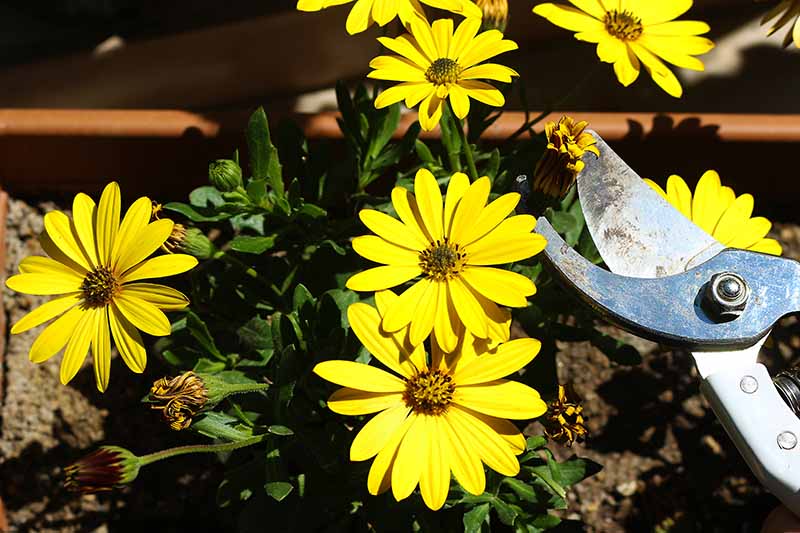
Almost before we know it, we’re pulling out fistfuls of weeds, the first petals are beginning to fade, and those herbs we meant to harvest have sprouted spikes of blossoms.
This is where deadheading comes in – just when things are beginning to look a little peaked, this pruning technique offers us the opportunity to refresh plants, making them look young again, and eager to reproduce, having been denied the opportunity the first time around.
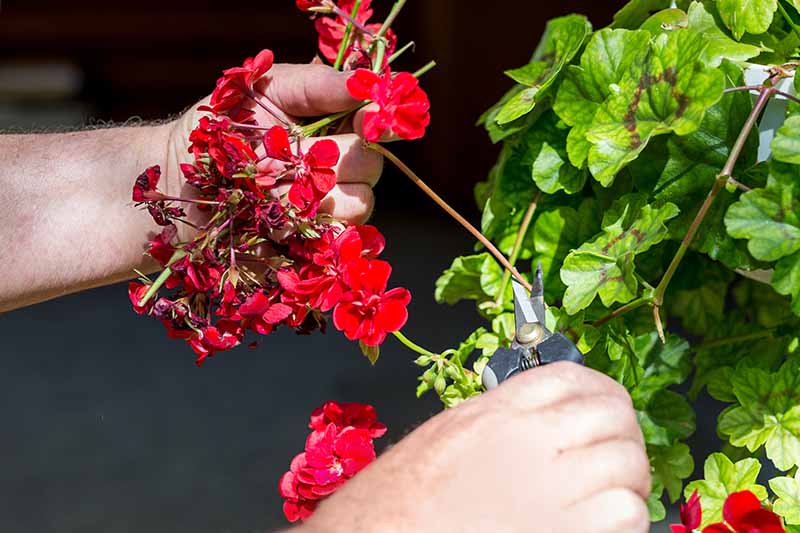
Even plants that don’t reflower are recharged when the energy devoted to reproductive growth is suddenly returned to roots and foliage.
Now, let’s turn our attention to various plant groups, and find out how to deadhead typical members of each.
And please note: Sanitizing pruning tools before and after use with a 10 percent bleach to water solution goes a long way toward supporting plant health and preventing the spread of disease.
Annuals and Biennials
There are many annuals that rebloom consistently throughout the growing season. By removing spent flowers, you can get the most they have to offer.
Examples include China aster, cape marigold, cosmos, geranium, marigold, pansy, strawflower, zinnia, and older varieties of lantana.
Remove individual flowers with a portion of the stem attached. The best place to make your cut is just above leaves or lateral stems. These locations are ideal to jump-start foliar regeneration.
Species with a multi-blossom head, like geraniums, are removed at the base of the stem, just above the foliage mound, when 70 percent of the petals have faded.
Some plants, like snapdragons, open early, when it’s cool. With deadheading and summer watering, those that remain vigorous may reward gardeners with a second display when the weather cools down again.
There are other annuals that deadhead themselves. A few of these “self-cleaning” types are impatiens, morning glory, petunia, wax leaf begonia, and newer varieties of lantana. They are best left alone, as the proximity of blossoms makes it too easy to accidentally snip off buds.
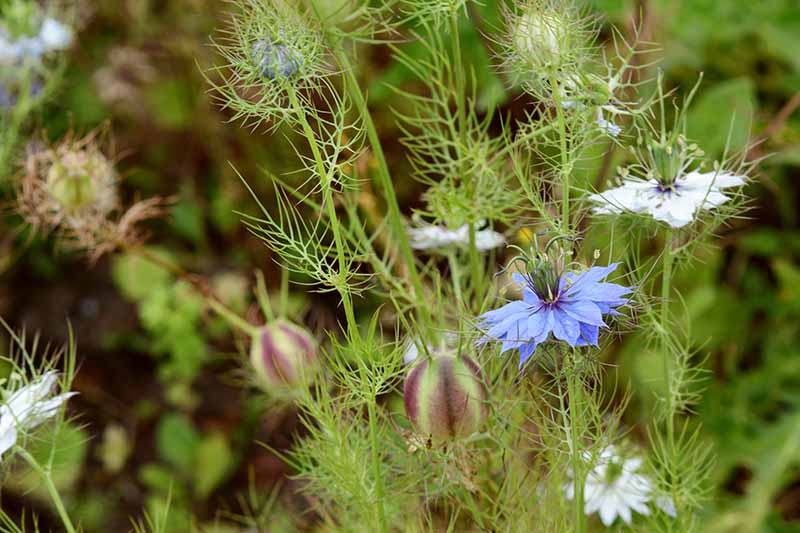
Nigella is a species that self-sows and returns each year. Deadheading is ill-advised if you want it to come back. Plus, you’d miss seeing its attractive lantern-like seed pods.
And then there are biennials that grow foliage in the first year and open in the second, like columbine, forget-me-not, foxglove, and hollyhock. If you deadhead them, they won’t be able to reseed themselves and come up again, either.
Bulbs and Rhizomes
Although they don’t rebloom, spring bulbs like daffodil, hyacinth, and tulip, as well as rhizomes like gladiola and iris, benefit from having nourishment diverted to the rootstock that would otherwise go into seed pod formation.
When snipping spent blossoms, take care not to prune the foliage, as it contributes food for next year’s colorful display.
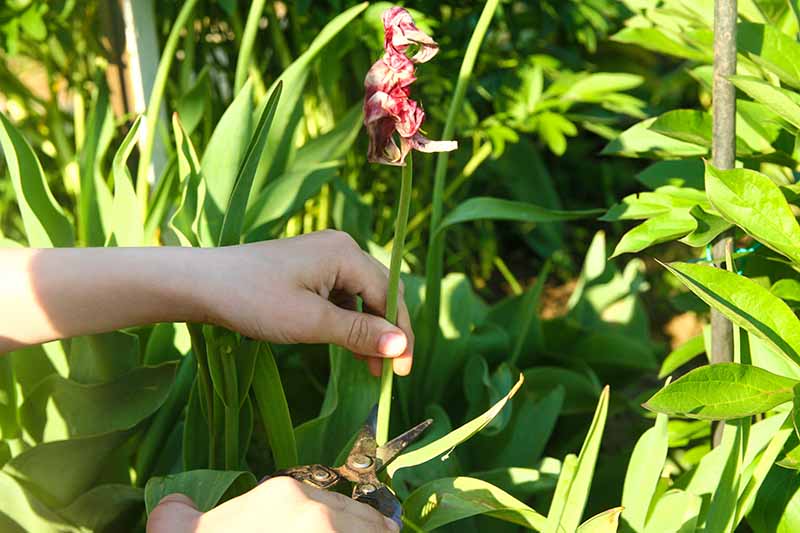
Some folks recommend cutting spent bulb flowers just below the head and leaving the stalk in place to feed the bulb, but these hollow stems may draw water down into the bulb and cause it to rot.
Instead, you can cut stems just above a leaf. This may be all the way down in the basal foliage.
The tuberous daylily benefits greatly from deadheading. By removing individual spent blossoms, you can encourage more to form.
When all the blossoms on the slender daylily stalk, or scape, are finished, cut it down at its origin in the basal foliage to help feed the rhizome and keep the garden looking fresh.
Be sure to leave the foliage intact to contribute its energy to the rhizome as well.
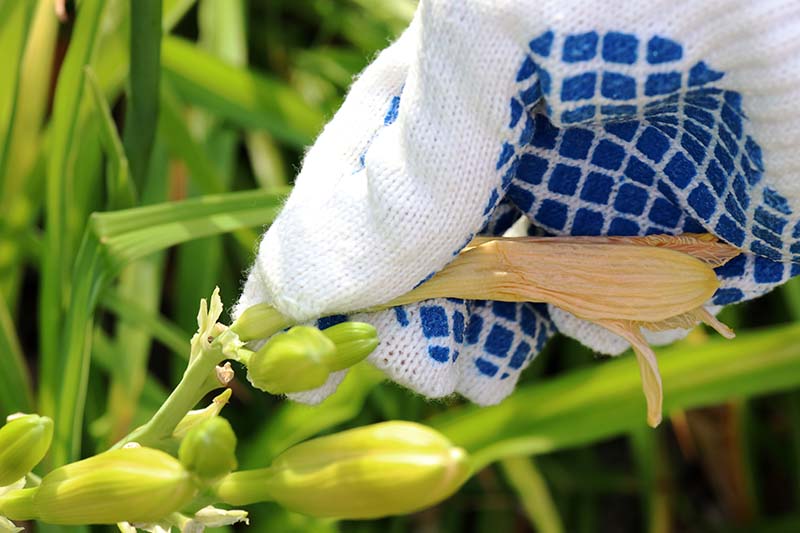
Another tuberous species is the dahlia. Snip off individual spent stems just above the nearest foliage, to promote continuous blooming.
Agapanthus is a unique rhizome plant that may rebloom with deadheading, but the reason most people snip spent heads is because it is an extremely prolific self-sower that spreads more by seeds than it does via rootstock expansion.

The late winter hellebore and early spring peony won’t rebloom after faded flora is snipped, but self-sowing is prevented, and renewed vegetative energy is evident in the lustrous leaves of these two species.
And finally, while the autumn chrysanthemum likely won’t have time to rebloom before winter, deadheading individual blooms keeps up appearances and strengthens the rhizome for next year.
Cacti and Succulents
For cacti and many succulents, foliage is the main attraction, and flowers are a rare bonus.
Nevertheless, if you are blessed with blossoms, you can deadhead them as they fade, to restore strength and limit self-sowing.
Succulents grown for their blossoms include kalanchoe, a popular houseplant we’ll mention again shortly, and ‘Autumn Joy’ sedum, a garden bloomer we discuss in the perennial section.
Foliage
Why would we devote a section of this article to foliage plants when we’re talking about deadheading?
Because, like cacti and many succulents, plants that are grown specifically for their handsome foliage may occasionally flower.
Two examples are annual coleus and perennial caladium (a rhizome).
These leafy showstoppers grow well both indoors and out, and sometimes sprout a small, rather nondescript flower.

For coleus, it’s a small terminal spike of tiny lavender-blue blossoms that is easily pinched off. Doing so prevents this annual from running to seed, becoming scraggly, and dying prematurely.
Caladium produces a pale spike-like spadix inflorescence of minute white blossoms surrounded by a sheath-like spathe that resembles an anthurium. It is snipped off with ease – but not so fast!
In this case, the occasional blossom is so fascinating, and there may be so few, that it is fun to let several run to seed for a peek at the orange or yellow berry-like contents of its pods. Remove the rest to restore energy to the rhizomes.
Ground Covers
You can refresh perennial ground covers like creeping phlox and creeping thyme by mowing them after they flower, accomplishing both deadheading and cutting back at the same time.
In addition to boosting root health and stimulating foliar growth, the phlox may even reward you with a second, late-season show.
Sweet alyssum is a prolific self-sowing annual that grows thickly like a ground cover. It’s a good candidate for a mid-season cutback to inhibit seed drop and produce more blossoms late in the season.
Hanging Baskets and Houseplants
Hanging plants have masses of blossoms and are generally self-cleaning. However, by pinching the stems off beneath a spent bloom, just above the nearest leaves, you can keep them at the peak of vigor all season long. Examples include fuchsia, hanging petunia, and lobelia.
Some folks like to take down hanging containers of self-deadheading types to give them a good shake to dislodge fallen petals. Removing them not only makes the plants look neater, it prevents the spent blossoms from becoming slimy with rainwater, and inviting fungal pathogens.
Indoor plants also benefit from deadheading, as it restores strength to the roots and foliage.
To trim spent blooms from tropical African violet, use a pair of pointy scissors or fine snips to avoid accidentally severing budding stems in close proximity. If you prefer, instead of cutting the tiny stems one by one, wait until an entire cluster has finished, and cut the cluster-bearing stem just above the foliage.
Kalanchoe, a succulent cultivated primarily for its blossoms, is another example of a tropical houseplant with clusters of tiny blooms.
When most of a cluster has faded, cut the cluster-bearing stem just above the foliage.
And Christmas cactus, a rainforest plant as opposed to a desert cactus, is easy to keep looking its best with a gentle twist of each faded bloom to remove it.
If you grow miniature plant species, tools like nail scissors and tweezers are very handy for snipping blooms just above foliage.
For orchids, deadhead individual blossoms as they fade by snipping just above the main stem to which they are attached. When the entire stem has finished blooming, cut it off just above its origin in the basal foliage.
Herbs
There are both annual and perennial types of herbs.
In order to keep leaf types like basil and rosemary going, you have to continually pinch the growing tips to keep them from flowering. In the event that one does “bolt” and produce a stalk of blossoms, it’s essential to snip it off, or the plant will run to seed and die.
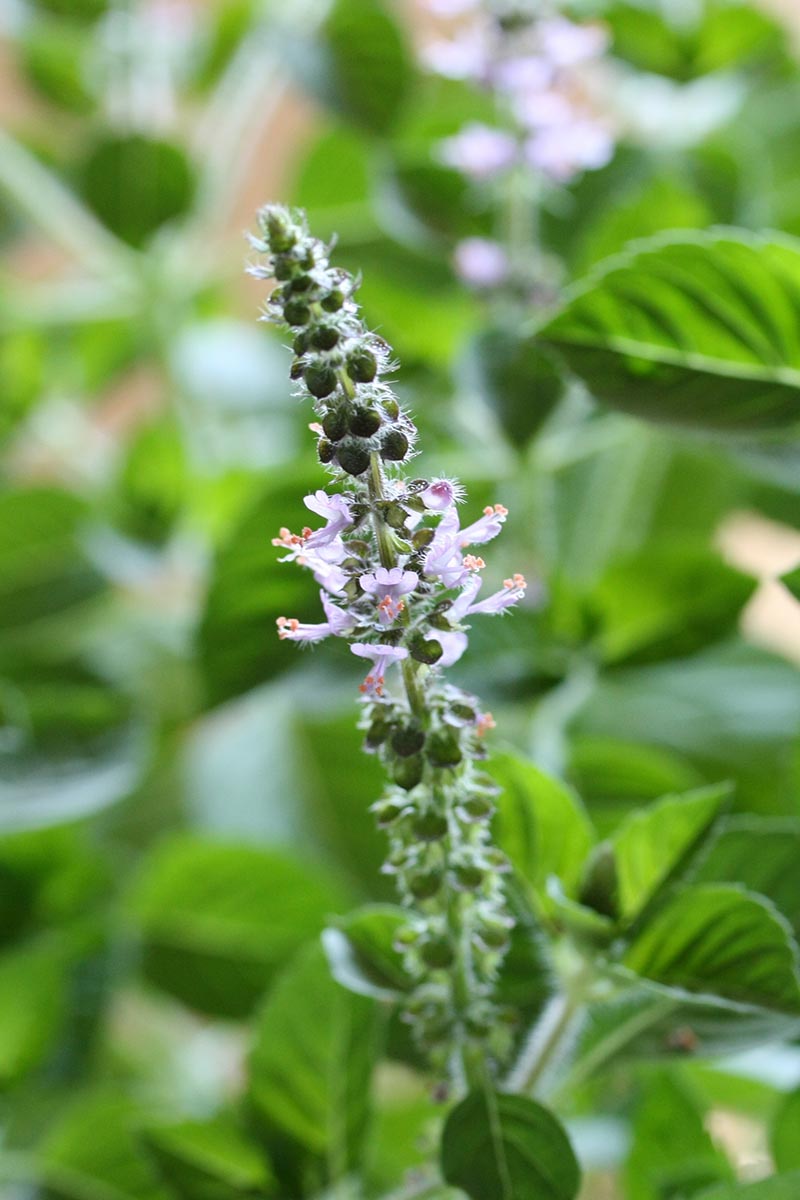
On the other hand, if you are growing a seed herb like caraway, you have to let the plant flower and run to seed to harvest the spice.
And finally, if you grow dill, prized for both foliage and seed, pinch off the growing tips until you have your fill of leaves, then let it bloom and run to seed for harvest.
Perennials
Some perennials that bloom repeatedly are:
They may appear continuously or intermittently.
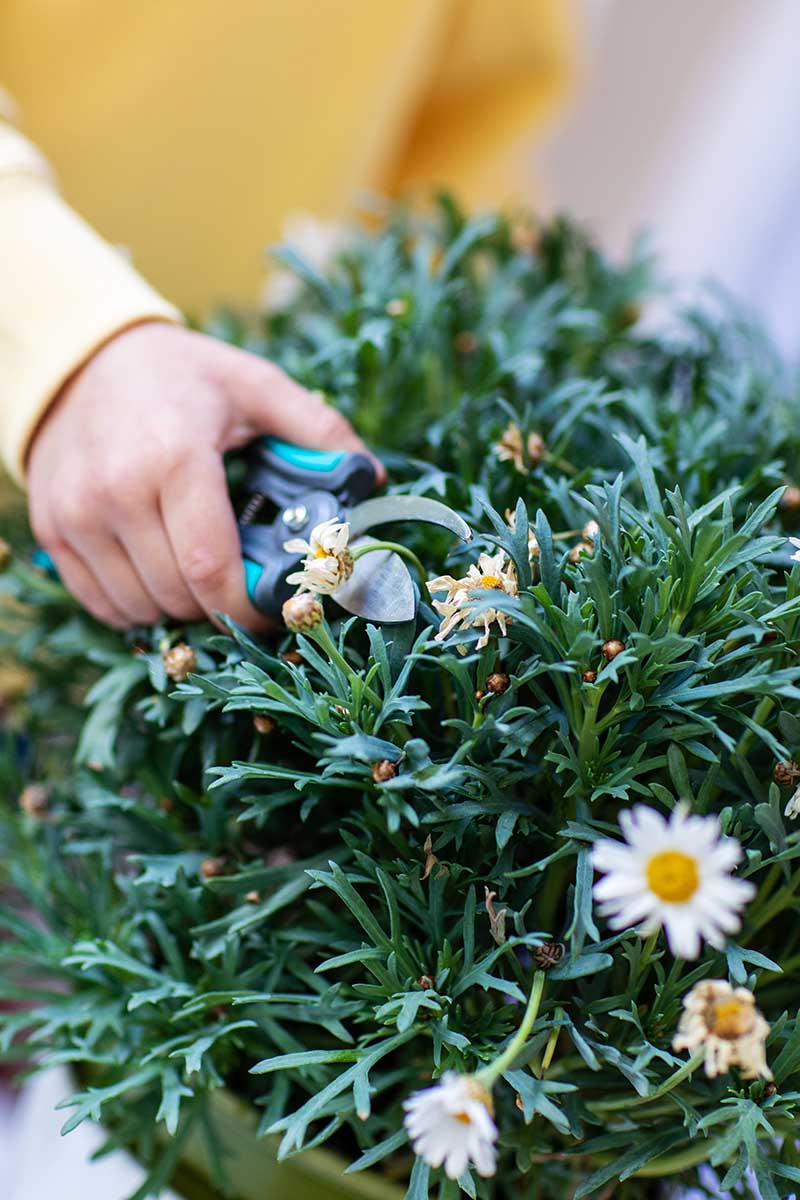
Some species like coneflower and poppy produce one blossom per stem. Cut spent blooms just above the closest foliage.
Others, like the daisy, may bud at the terminal ends and also on lateral, or side shoots. The technique is basically the same: cut the stem of the spent head just above the nearest leaves or budding/flowering lateral shoot.
If you have a faded blossom on a main stem that has no side shoots, or spent lateral growth, you can cut it all the way to its point of origin in the basal foliage.
Some shrubby plants, like catmint and yarrow, have faded flowers and floppy stems by midsummer, if not sooner. For these types, it’s best to deadhead or do a cutback of the entire plant, to rejuvenate it for a late-season comeback.

Cutting individual stems just above leaf nodes, rather than gang-chopping them, may speed regrowth. Be sure to water them on the hottest days, and you may see a second round of color late in the season.
For plants with long leafless or almost leafless racemes, like astrantia, heuchera, and hosta, and dense spikes like aster, larkspur, and summer snapdragon, it’s best to wait until 70 percent of the small flowers have opened before cutting entire stems at their base.
If you wait until all of the flowers are finished, some may form seeds and sap plant strength.
Some perennials bloom once per season, like astilbe, autumn-blooming sedum (a succulent cultivated for its flowers), and sunflower.
And while you may be tempted to cut off their flowers to neaten the garden, they run to seed so beautifully, you may prefer to leave them for fall-to-winter interest. The birds may enjoy them as well.
And reblooming coneflower has beautiful cone-shaped seed heads that finches are especially fond of, so you may want to leave some of them unpruned, too.
Shrubs
Some shrubs are wired to bloom once, like azalea, camellia, and rhododendron, although you’ll occasionally see the odd off-season flower.
And while deadheading doesn’t bring about another flush of blooms, it does stimulate roots and foliage, and neaten the garden.

There are reblooming lilac varieties that will put on a spring show and return for an encore in the fall. Pruning off clusters of spent flowers just above the foliage supports this growth habit with a return to the vegetative mode.
As for hydrangea, you may want to leave the flowers alone, as they look lacy and elegant in dry floral arrangements.
A rose may bloom once or intermittently through the growing season, depending on the variety.
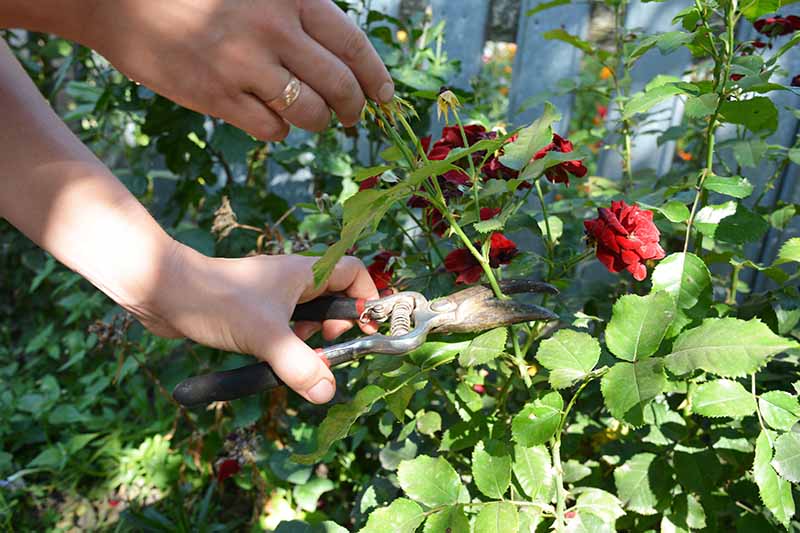
To deadhead individual roses, cut the stem of the spent bloom above the closest foliage. For especially sturdy stem regeneration, cut just above a five-leaf set.
For those with clusters of blooms, deadhead all individually. When entire stems begin to fade, cut the entire multi-blossomed stem above a five-leaf cluster.
If you grow roses with especially large, attractive, seed-filled hips, like the rugosa type, you may want to leave at least some of the flowers intact to set their lovely seed.
And finally, some types of roses deadhead themselves, like the Knock Out® cultivars, which readily shed spent blooms and grows more, forming relatively few hips.
In general, all kinds of roses are fair game for deadheading, even if they don’t repeat bloom, simply for the benefits of strong vegetative growth and neatness.
Vines
There are vines to consider, as well.
Clematis is a woody perennial climber with continuous blooms that you can deadhead to get as many as possible.
You can remove individual flowers as they fade by cutting stems just above the closest foliage.
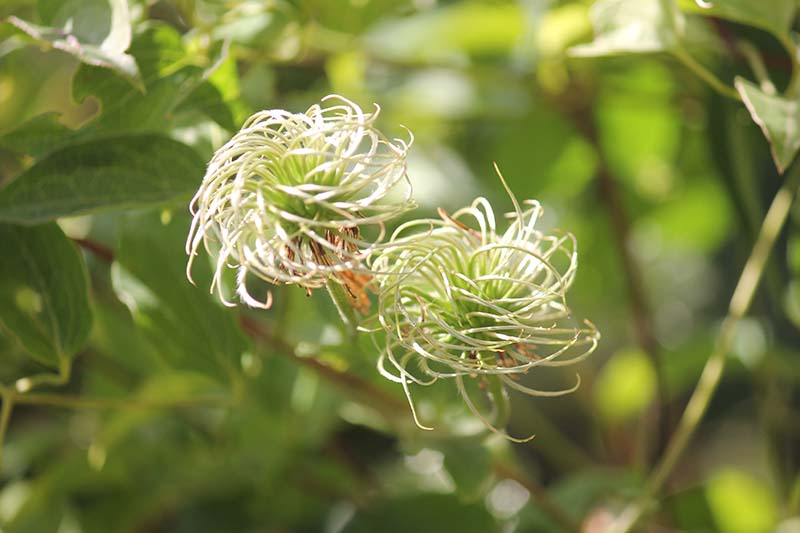
However, its seed pods resemble swirls of spun silk, so you may want to let some of the blossoms run to seed so you can appreciate them.
Some vines, like coral honeysuckle and passionflower, do not need deadheading to rebloom, but a midseason cutback boosts foliar growth and helps to contain wayward stems.
And while trumpet vine needs no encouragement to bloom, cutting it back after a flush of flowers is the only way to prevent massive self-sowing and a yard full of seedlings next spring.
Ideally, vines are cut at leaf nodes. But if you do a mass cutback across random stems, don’t worry, vigorous growers will still be back very soon.
Part of a Healthy Regimen
Now that you’re familiar with the type of pruning we call deadheading, and how to manage a wide variety of plants, you can give it a try with your own.
Keep a garden journal to note the rebloomers, the ones that yield a bonus bloom with a midseason cutback, and those that simply look neater without all the debris.
Write reminders to yourself to harvest herbs regularly to prevent flowering, seed set, and premature demise, and keep your lovely edibles going as long as possible.
Also, if you grow a cutting garden, you know that “cut-and-come-again” species, like the annual daisies and zinnias we spoke about, rebloom continuously when they are “live-headed,” if you will.
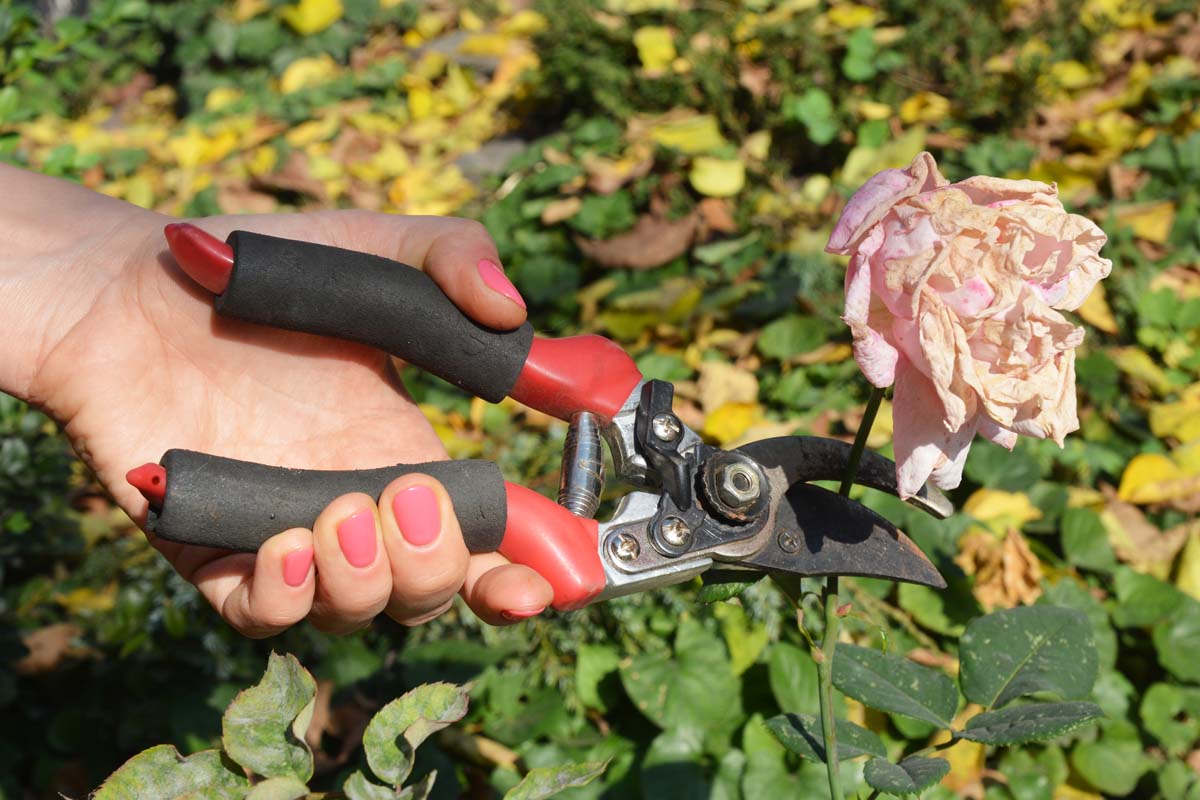
And perennials like black-eyed Susans also benefit from the energy boost to roots and foliage.
Make deadheading a pleasure instead of a chore by doing a little each day. Put on your gardening shoes and take a quick spin through your yard before you start your day, snipping and pinching as you go.
Provided your plants are healthy, toss cuttings onto the compost heap where they can break down and contribute to garden care.
Soon, you’ll be familiar with your plants’ behaviors, and deadheading will be a routine activity in your outdoor living space.
Do you deadhead your flowers diligently? Let us know in the comments section below!
If you found this guide to informative and would like to read more about pruning, we recommend the following articles next:
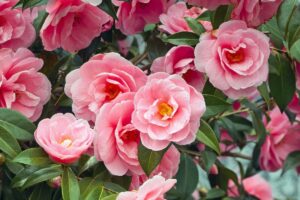
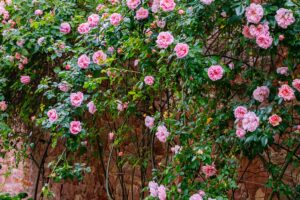
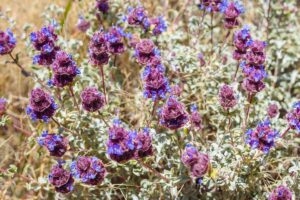
Excellent article. I especially appreciated the advice on WHERE to cut exactly, not just that I SHOULD cut. As much as that advice is given I often feel “not quite sure” where to make the cut? Thank you for giving me the instruction I needed to dead-head with confidence😀